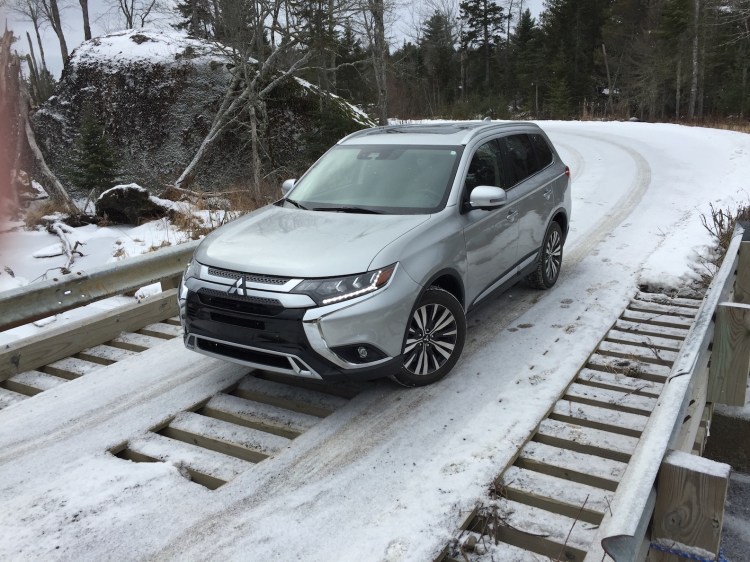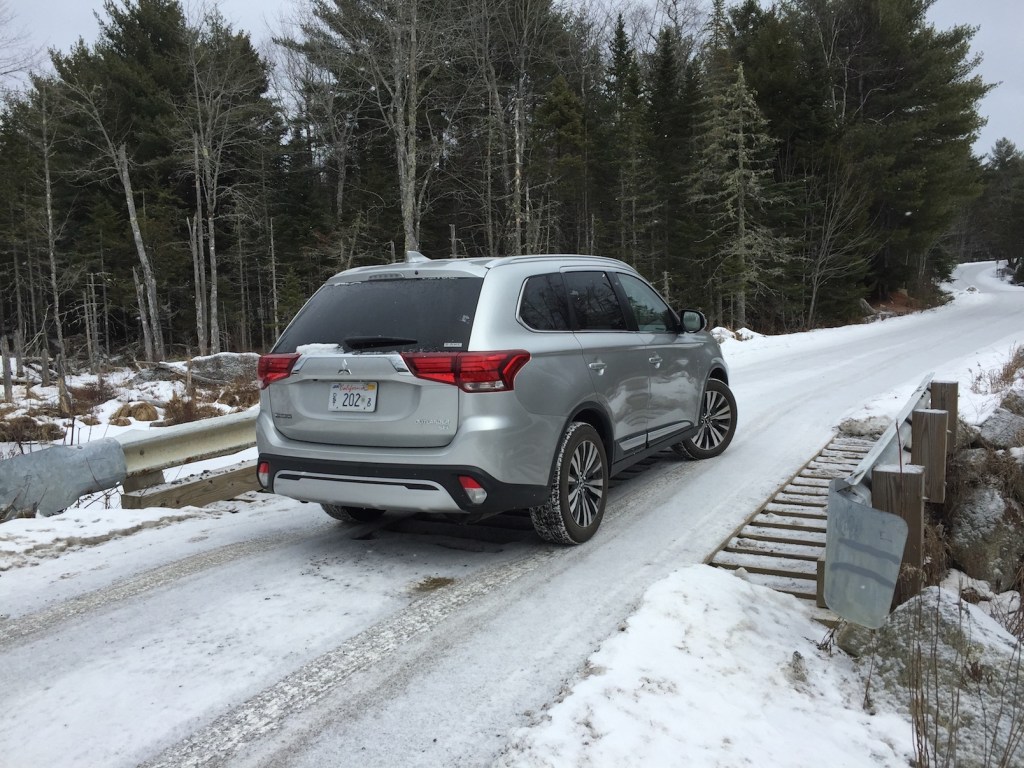This Mitsubishi Outlander is the brand’s top-selling model in the American market, with more than 41,800 sold in 2018. Along with its similarly named siblings, the Outlander series helped Mitsubishi reach 118,000 total units sold last year, a 13 per cent sales increase that propelled the import brand past Lincoln, Volvo, Land Rover and a host of other niche products.
And therein lies the crux of the Outlander. It is a reasonably priced compact crossover with the latest amenities, and also offers a tiny third-row seat, a rarity for the compact class.
The Outlander also offers S-AWC, Mitsubishi’s acronym for all-wheel drive. With a console push-button, off-roaders and snowbelt drivers can select an automatic AWD setting, with the system detecting wheelspin to engage the rear axles; or, snow mode, with a heightened sense of greater traction applications; or, push once more for AWC-lock, which keeps the rear axles engaged.
Few of the Outlander’s rivals offer anything close to this much selectability for their crossovers, preferring automatic systems without driver engagement.
However, the Outlander is also among the oldest offerings in the segment. In direct comparison to several rivals’ vehicles, a driver will note variances in suspension performance and handling – nothing that is a concern, just different efforts directed at target buyers.
As pricing rises, so does the investment required for engineering and research. Mitsubishi has worked hard to keep the Outlander current despite a shortage of development monies for a whole new platform. The brand’s alliance with Nissan and Renault will certainly help in that regard.
With pricing starting at just under $24,000 for front-drive ES models, buyers will find split-folding 60/40 second row seats that can slide fore and aft, as well as smaller 50/50 splitting third-row seats that create seven-passenger seating.
If you approach this capacity as five adults and two kids or two adults and five kids, everyone will travel more comfortably. At 185 inches long, the Outlander is slightly longer than most of the compact crossovers, affording the space for the third row seat.
Moving up to our top SEL trim ($33,225 as shown) the features expand rapidly: eight-way powered front seats (both); two-stage heated leather up front, dual-zone climate controls, push-button ignition and access, power liftgate, drive-mode selector, and a 7.0-inch touchscreen with Apple/Android compatibility and digital HD radio.
Blind-spot detection, lane change assist, rear cross-traffic alert, plus an electric parking brake are also included.
Opt for the Touring package ($3,000) and you are rewarded with forward collision mitigation, lane departure warning, adaptive cruise control, automatic hi-beams on the LED lighting, power sunroof, 710-watt Rockford Fosgate audio with nine speakers, multi-view camera program, and a heated steering wheel.
Power comes from a 166 hp 2.4-liter four-cylinder engine running through a CVT automatic. Cruising velocity was easily achieved, and the Outlander stayed better in “top gear” on the highway when cruise control was not employed.
Activating the dynamic cruise created unnecessary shifting to maintain momentum that also affected fuel economy. After 800 miles, about a third of which included snow/sleet-covered roads, the Outlander returned 23 mpg against an EPA rating of 24/29/26 mpg.
The season and the weather also combined to present plenty of opportunities to explore that selectable AWC system. When pressing the limits of traction, one could clearly feel the rear axles provide additional grip and propulsion on all of the AWC settings, but it also became clear that real winter tires in place of the Toyo all-season tires would have maximized the Outlander’s engineered attributes and created more driver confidence.
Contrasts and complaints: The driver’s sun visor is too short and doesn’t slide along its arm for the winter sun’s low horizon position in your side window; the touchscreen is unworkable with gloves on (a complaint for most all such screens) which is somewhat helped by the steering wheel buttons; the steering wheel is heated in select spots, but the seat heaters do both your back and bottom, and quite warmly, too.
The Mitsu also uses a conventional console shifter, making no-look shifting very easy. Yet other than the two beverage slots, the console space lacks the tiny binnacles and nooks for your traveling gear.
Mitsubishi has pumped up sales with four versions of the Outlander, including a plug-in electric/hybrid version.
The market is moving ahead, constantly, and as consumers gravitate to newer crossovers to replace their small cars, the Outlander needs some revisions to retain its established momentum.
Send questions/comments to the editors.





Comments are no longer available on this story